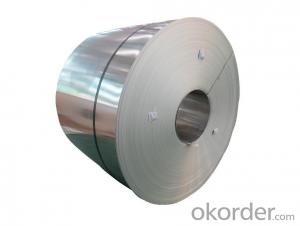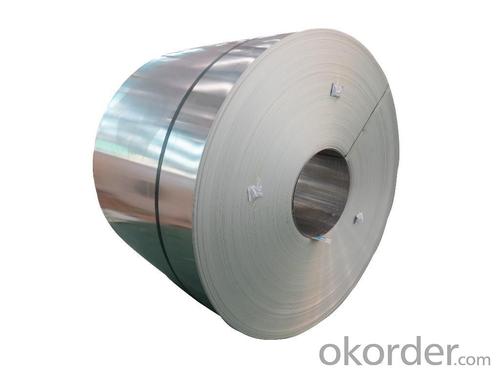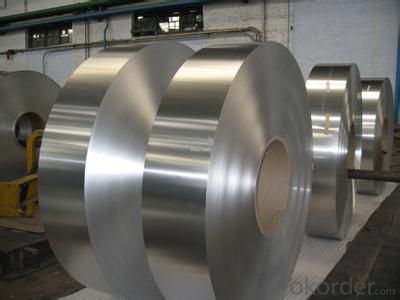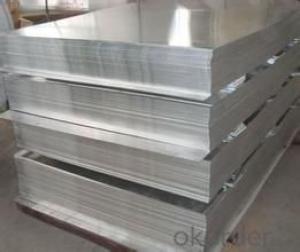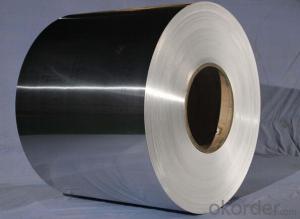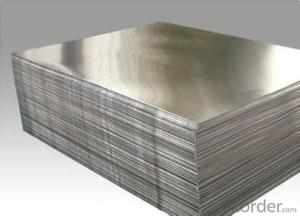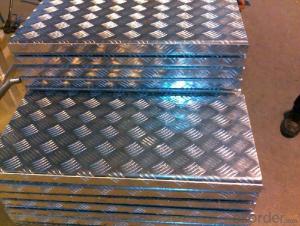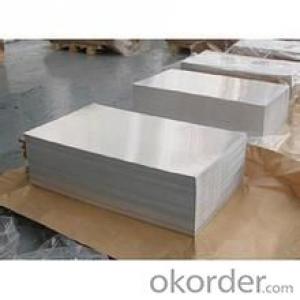Mill Finished Aluminum Strips for Cooling - Aluminum Sheets for Sale in NJ
- Loading Port:
- Shanghai
- Payment Terms:
- TT OR LC
- Min Order Qty:
- 5 m.t.
- Supply Capability:
- 50000 m.t./month
OKorder Service Pledge
OKorder Financial Service
You Might Also Like
Specification
1.Structure of Mill Finished Aluminium Strips for Coolling
Mill Finished Aluminium Strips for Color Coated Ceilling for Deep Drawing Cookware is one semi-finished aluminium material. This strip can be rolled down to aluminium coil,sheet,circle ect. The alloy AA1050 is widly used in building, industry ect. Its weight is much lower than steel. So many customers choosed aluminium material instead of steel.
2. Main features of Mill Finished Aluminium Strips for Coolling
a.Competitive price---We have our own mills and can produce mill finished aluminium coils, so we can control the production cost better.
b.Professional after-sale service---We have more than 15 years exportation experience and you need not worry about the exporation problems.
c.Fast delivery time---We can control the delivery time within 35 days.
3. Image of Mill Finished Aluminium Strips for Coolling
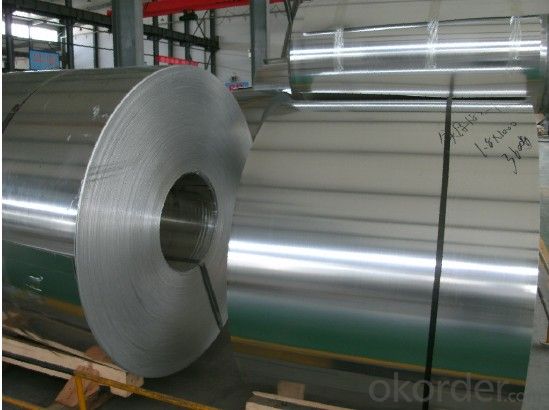
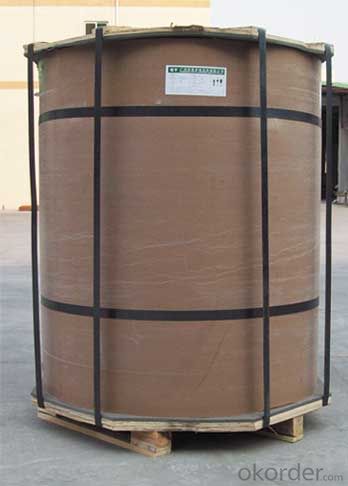
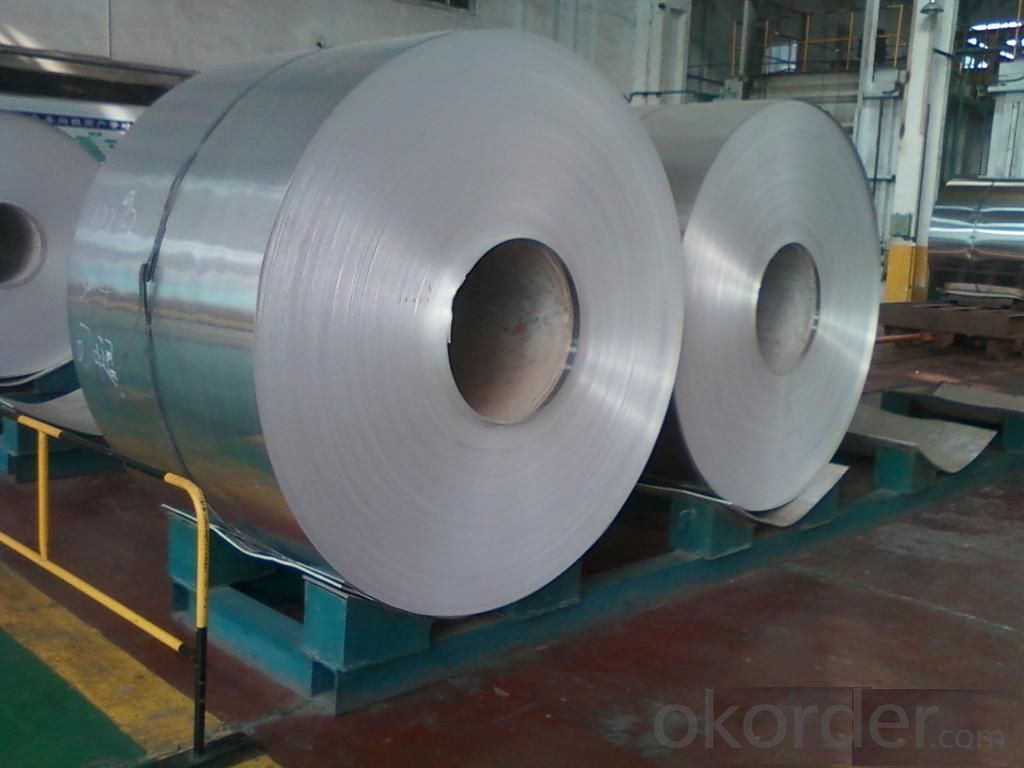
4. Product Specification of Mill Finished Aluminium Strips for Coolling
| Alloy | Temper | Thickness | Width | Weight |
| AA3003 | H14 | 0.2MM-3MM | 1000MM-1800MM | 2 TONS |
5.FAQ:
What is the quality standard?
---Usually our standard is GB3880-2006
What is the largest width?
---It is 2300mm
What is the MOQ?
---Usually we can accept 80 tons.
- Q: Are the aluminum sheets suitable for manufacturing architectural roof systems?
- Indeed, architectural roof systems can be manufactured using aluminum sheets. Aluminum is widely favored as a roofing material due to its exceptional durability, lightweight composition, and resistance to corrosion. These remarkable attributes render it highly capable of enduring diverse weather conditions, such as strong winds, heavy rainfall, and snowfall. Moreover, aluminum can be easily manipulated and molded into various shapes, granting versatility in both design and installation. Furthermore, it is worth noting that aluminum is an eco-friendly choice, as it can be recycled. Ultimately, the utilization of aluminum sheets in the production of architectural roof systems presents a wide array of advantages and proves to be a suitable option for this purpose.
- Q: What is the tensile strength of aluminum?
- The tensile strength of aluminum can differ depending on the specific alloy and temper, as well as the manufacturing process. However, the average range of aluminum's tensile strength is approximately 70 to 700 MPa (megapascals). This puts aluminum in the category of relatively strong materials when compared to other non-ferrous metals. It should be noted that factors such as the thickness and shape of the aluminum component, as well as any heat treatment it has undergone, can also impact its tensile strength. Therefore, it is always advisable to refer to specific data sheets or engineering references for precise and accurate information regarding the tensile strength of a particular aluminum alloy.
- Q: My professor gave us the following:1roll of Reynonlds Wrap Heavy Duty Aluminum18.0 in wide, 500.0 ft long and 0.94mil thickThe cost $48.98and I'm not sure how to figure it out
- You have : ---------------- V = aluminum volume in one roll = ( L ) ( W ) ( t ) V = ( 500 ft ) ( 1.5 ft ) ( 0.94 mil ) ( 1 in / 1000 mil ) ( 1 ft/12 in ) V = 0.05875 ft^3 m = aluminum mass = ( d ) ( V ) m = ( 168 lbm/ft^3 ) ( 0.05875 ft^3 ) = 9.87 lbm m = ( 9.87 lbm ) ( 453.6 g / 1.0 lbm ) = 4477 g n = moles of aluminum in one roll = m / M n = ( 4477 g ) / ( 27 g/mol ) = 165.8 moles Al N Al atoms = ( n Al ) ( NAVO ) N Al atoms = ( 165.8 mol ) ( 6.022 x 10^23 atoms / mol ) N Al atoms = 998.5 x 10^23 Al atoms C* = cost per atom = cost of aluminum roll / number of aluminum atoms in one roll C* = ( 4898 cents ) / 998.5 x 10^23 atoms ) C* = 4.91 x 10^-23 cents per Al atom --------------- Please award Best Answer to the most correct and most helpful response to your question. C* =
- Q: What is the surface finish of 101 aluminum sheets?
- The surface finish of 101 aluminum sheets can vary depending on the specific manufacturing process and desired application. However, common surface finishes for 101 aluminum sheets include mill finish, brushed finish, anodized finish, and painted finish. Mill finish refers to the raw, untreated surface of the aluminum sheet, which may have some minor imperfections or scratches. Brushed finish is achieved by brushing the surface of the sheet with a fine abrasive material, resulting in a smooth, satin-like appearance. Anodized finish involves an electrochemical process that forms a protective oxide layer on the surface of the aluminum, providing enhanced durability and corrosion resistance. Painted finish, on the other hand, involves applying a layer of paint onto the aluminum sheet to provide color and additional protection. Ultimately, the choice of surface finish for 101 aluminum sheets depends on the desired aesthetic, functional, and environmental requirements of the application.
- Q: Can aluminum sheets be an alternative to glass in certain applications?
- Yes, aluminum sheets can be an alternative to glass in certain applications. Aluminum sheets offer several advantages over glass, making them a suitable choice in specific scenarios. Firstly, aluminum sheets are lightweight and durable, making them ideal for applications where weight is a concern, such as in aerospace or automotive industries. Glass, on the other hand, is relatively heavy and brittle, which can limit its use in certain environments. Additionally, aluminum sheets have excellent corrosion resistance, making them suitable for applications in marine or coastal environments where glass may deteriorate over time due to exposure to saltwater. Aluminum sheets also have a high strength-to-weight ratio, allowing for greater design flexibility and structural integrity compared to glass. Moreover, aluminum sheets can provide better thermal insulation properties compared to glass. They offer improved heat transfer resistance, which can be advantageous in applications where temperature control is crucial, such as in the construction industry. Furthermore, aluminum sheets can be more cost-effective than glass in certain applications. The production and installation costs of aluminum sheets are often lower compared to glass, making them a more economical choice for large-scale projects. However, it is important to note that glass still has its own unique properties and advantages that make it the preferred choice in many applications, such as its transparency and optical clarity. Glass also offers better resistance to scratches and chemical corrosion compared to aluminum sheets. In conclusion, while aluminum sheets can be a viable alternative to glass in certain applications due to their lightweight, durability, corrosion resistance, thermal insulation properties, and cost-effectiveness, the choice between the two materials ultimately depends on the specific requirements and constraints of the application in question.
- Q: How do you prevent warping of aluminum sheets during machining?
- There are several measures that can be taken to prevent warping of aluminum sheets during machining: 1. Proper material selection is crucial in minimizing warping. Opt for aluminum alloys with lower levels of thermal expansion, like 6061 or 7075, as they are less prone to warping. 2. It is recommended to stabilize the material before machining by annealing or stress-relieving the aluminum sheets. This process reduces internal stresses and decreases the likelihood of warping. 3. Ensure the use of appropriate cutting tools. Opt for tools with sharp edges and proper geometry to minimize heat generation and facilitate efficient chip removal. Carbide or diamond-coated tools are often preferred for their high heat resistance when machining aluminum. 4. Minimize heat generation during machining, as excessive heat can cause warping. Implement the use of coolant or lubricants to reduce friction and dissipate heat. Continuous cooling helps maintain a stable temperature and prevents warping. 5. Properly control cutting parameters such as cutting speed, feed rate, and depth of cut to prevent warping. High cutting speeds or excessive material removal rates generate excessive heat, which leads to warping. Experimentation and experience should determine the optimal parameters. 6. Use appropriate fixturing during machining to minimize the chances of warping. Securely clamp the aluminum sheets using suitable fixtures or jigs to maintain stability and prevent movement. 7. Consider employing machining techniques like climb milling or ramping, which reduce vibrations and ensure a smoother cutting process, thereby reducing the risk of warping. 8. After machining, it is advisable to stress-relieve the aluminum sheets again. This step further reduces any residual stress that may have developed during the machining process. By adhering to these steps, the chances of warping during the machining of aluminum sheets can be significantly reduced, resulting in high-quality finished products.
- Q: What are the standards and certifications available for aluminum sheets?
- Aluminum sheets can be evaluated for quality and compliance with industry requirements through various standards and certifications. Some well-known ones include: 1. ASTM International Standards: Developed by the American Society for Testing and Materials (ASTM), these standards focus on aspects like chemical composition, mechanical properties, and dimensional tolerances. They promote consistent quality across different aluminum sheet products. 2. ISO 9001: This globally recognized certification establishes guidelines for quality management systems. Aluminum sheet manufacturers with ISO 9001 certification demonstrate their commitment to meeting customer requirements, continuous improvement, and strict quality control processes. 3. ASME Standards: The American Society of Mechanical Engineers (ASME) has specific standards for aluminum sheet materials used in pressure vessels, piping, and other applications. These standards ensure the safety and reliability of aluminum sheets in critical applications. 4. MIL-Specifications: The United States Department of Defense (DoD) has developed military specifications (MIL-Specs) for materials, including aluminum sheets. These specifications define the requirements for military-grade aluminum sheets, ensuring their suitability for defense applications. 5. EN Standards: The European Committee for Standardization (CEN) has established a series of European Norm (EN) standards for aluminum and aluminum alloys. These standards cover chemical composition, mechanical properties, and surface finishes, ensuring compatibility and consistency in the European market. 6. RoHS Compliance: Compliance with the Restriction of Hazardous Substances (RoHS) is crucial for aluminum sheets used in electrical and electronic equipment. This certification guarantees that the aluminum sheets are free from hazardous substances, ensuring environmental safety. Manufacturers and suppliers of aluminum sheets must adhere to these standards and certifications to ensure their products are of the highest quality, safety, and suitability for specific applications.
- Q: Can aluminum sheets be used for roofing?
- Yes, aluminum sheets can be used for roofing. Aluminum is a popular choice for roofing materials due to its durability, lightweight nature, and resistance to corrosion. Aluminum roofing sheets are known for their longevity, as they can last for several decades without the need for replacement. Additionally, aluminum has excellent reflective properties, which can help to reduce energy costs by keeping the building cooler in hot climates. Moreover, aluminum is easy to install, making it an attractive option for roofing projects. Overall, aluminum sheets are a reliable and practical choice for roofing applications.
- Q: What are the different methods of surface passivation for aluminum sheets?
- There are several methods of surface passivation for aluminum sheets, including anodizing, chromate conversion coating, and organic coatings. Anodizing involves creating a protective oxide layer on the surface of the aluminum through an electrochemical process. Chromate conversion coating is a chemical treatment that converts the aluminum surface into a thin chromate film, providing corrosion resistance. Organic coatings, such as paints or lacquers, can also be applied to aluminum sheets to provide a protective barrier against moisture and other environmental elements.
- Q: How do aluminum sheets perform in terms of creep resistance?
- The excellent creep resistance of aluminum sheets is well-known. Creep refers to the gradual deformation of a material under a constant load over time. In comparison to steel and other metals, aluminum exhibits a relatively low creep rate. This means that it deforms at a slower pace when subjected to the same load and temperature conditions. As a result, aluminum sheets are ideal for applications that require dimensional stability and resistance to long-term deformation. Furthermore, aluminum's low susceptibility to creep enables it to endure high temperatures without undergoing significant deformation. Consequently, it finds suitability in a wide range of industries, including aerospace, automotive, and construction. Nevertheless, it is crucial to consider that the creep resistance of aluminum sheets can vary depending on factors such as the alloy employed, heat treatment, and other variables. Hence, it is vital to select the appropriate aluminum alloy and design that can optimize creep resistance for specific applications.
Send your message to us
Mill Finished Aluminum Strips for Cooling - Aluminum Sheets for Sale in NJ
- Loading Port:
- Shanghai
- Payment Terms:
- TT OR LC
- Min Order Qty:
- 5 m.t.
- Supply Capability:
- 50000 m.t./month
OKorder Service Pledge
OKorder Financial Service
Similar products
Hot products
Hot Searches
Related keywords
